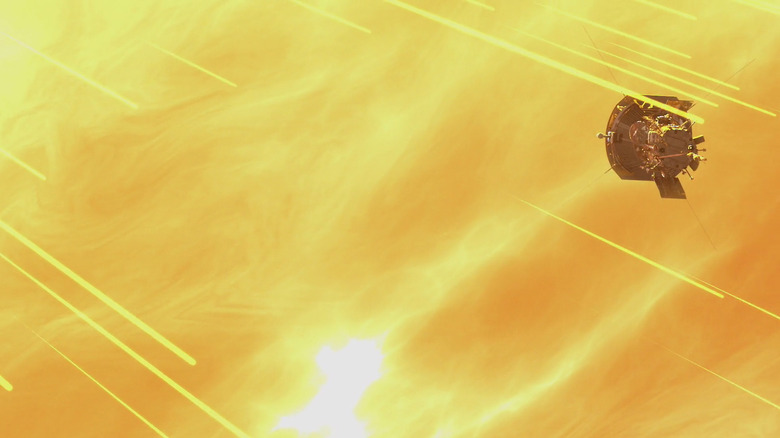NASA's Mission To 'Touch The Sun' Just Reached Its First Major Milestone With Close Flyby
It's been a busy month for the Parker Solar Probe which, if you haven't been keeping track, is currently moving faster than any man-made object ever and also closer to the sun than anything humans have ever built. The spacecraft launched a couple of months back, but it's finally ready to do some science, and it just made it first close pass by our Sun, which is obviously cause for celebration.
The probe, which will make dozens of passes of the star, achieved its closest distance of this particular loop (called "perihelion") on Monday night. Now, its handlers back on Earth are eagerly awaiting word from the craft so that it can share whatever information it has gathered.
As Space.com explains, the probe is actually designed to lose contact with Earth while it's in close proximity to the Sun. It does this because the Sun's habit of interfering with communication between spacecraft and Earth. So, the probe makes its pass, does its thing, and its science team sits and waits for it to send word back, which really must be an excruciating time.
The probe is well equipped to handle its duties without input from its engineers. It's equipped with an incredible heat shield that will protect it from the intense heat of the Sun, and it has sensors and orientation systems that ensure that the heat shield is always pointed in the correct direction as it makes its way around the star.
This first pass is a great test for the probe, but it's also only the tip of the iceberg for NASA. The spacecraft is currently slated to perform a whopping 24 individual passes, creeping closer and closer over time to gather more and more data.
It'll still be a while before the probe actually sends back any information, however. Sending a constant stream of information back is taxing on any space hardware, so scientists receive the data in large download dumps at specific times. The first of those data dumps will happen sometime in early December, if everything goes according to plan.
